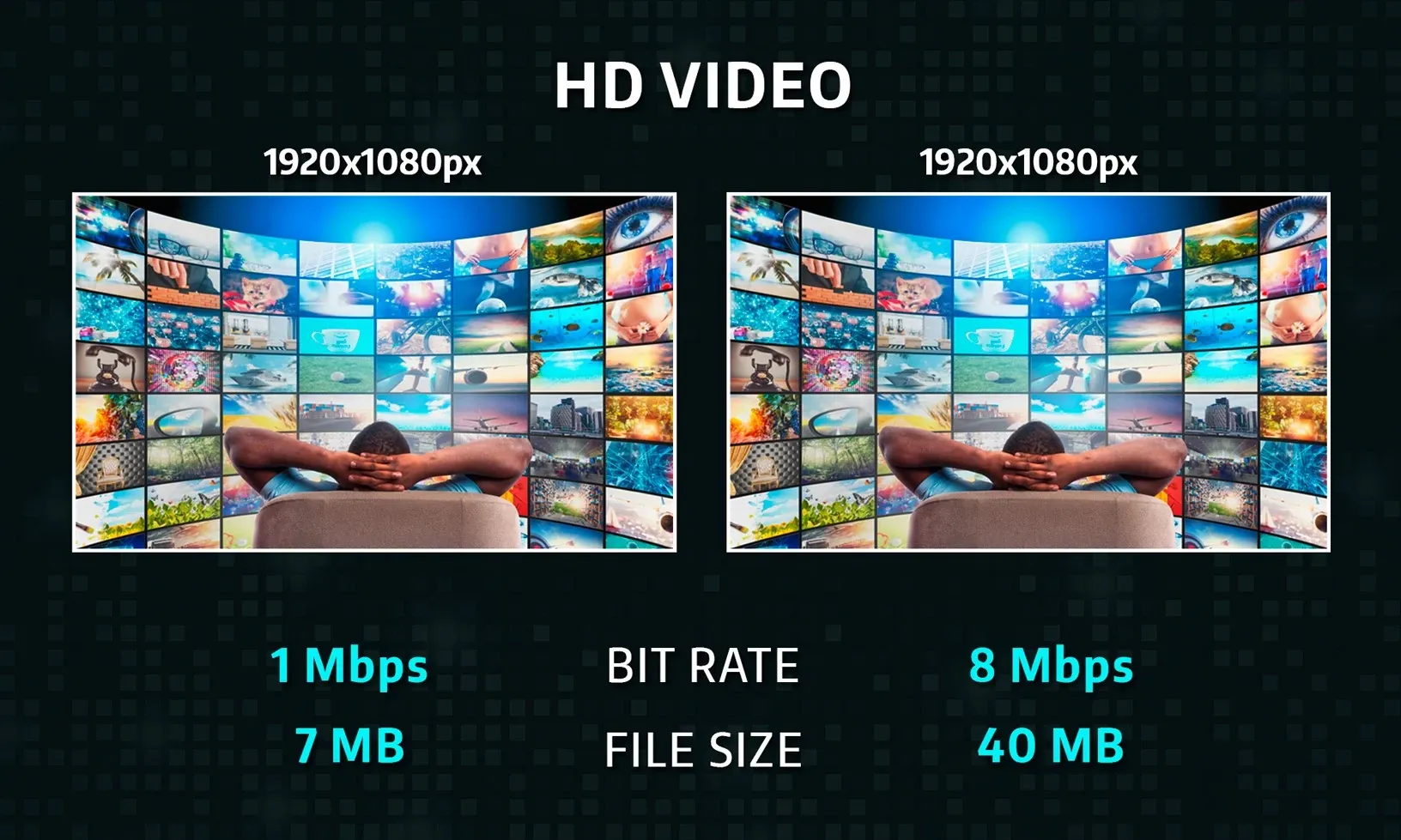If you're delving into the world of video, you've probably heard the term "bit rate" thrown around. Don't let it intimidate you! In this beginner's guide, we'll explore the link between bit rate and video quality, and how it affects your watching experience.
What is Bit Rate?
Bit rate, in the context of video, refers to the amount of data processed per unit of time. Think of it as the speed at which your video data is transmitted or processed. A higher bit rate means more data is being handled, and this usually translates to better video quality.
Bit rate is commonly expressed in the number of bits per second. A single bit is a rather small unit in terms of digital videos, so you'll most likely see larger units such as kilobits per second (kbit/s), or even megabits per second (mbit/s). A typical Full HD (1920x1080px) video will have a bitrate of 4 to 10 Mbit/s.
Higher Bit Rate, Better Video Quality
When your video has a higher bit rate, it means more information is captured and encoded. This leads to a higher-quality video with more detail and fewer compression artifacts. Imagine it like having more puzzle pieces to create a clearer picture. It's perfect for enjoying vivid, lifelike videos.
However, there's a trade-off. A higher bit rate also results in larger file sizes. This might not be an issue for watching videos on your computer, but it can become a concern when it comes to storage limitations or streaming.
Different video formats and platforms have recommended or maximum bit rates to ensure optimal playback and compatibility. Striking the right balance between video quality and file size is essential, depending on your specific needs and constraints.
AI Video Enhancement and Bit Rate
AI video enhancement techniques, such as denoising, sharpening, or upscaling, can impact the bit rate. When you apply these enhancement algorithms, the AI analyzes and modifies the video frames, introducing additional details and complexity, or reducing unwanted artifacts such as noise.
This newfound detail requires more data to represent the enhanced video accurately. As a result, the bit rate may increase to accommodate the extra information and maintain your desired video quality. On the other hand, bitrate may decrease if you've used AI for removing noise from the video because there is less information to be encoded after denoising.
Understanding Bit Rates for Different Resolutions
The minimum and maximum video bit rates vary depending on the specific video format, resolution, and desired quality. There are recommended ranges for different video platforms and streaming services. Here are some examples.
For standard definition (SD) videos, the minimum bit rate is usually 500 Kbit/s, while the maximum can range from 2 to 3 Mbit/s.
High definition (HD) videos start with a minimum bit rate of approximately 2 Mbit/s, and usually go up to 8-10 Mbit/s, and even higher for 2K and 4K videos.
However, these are general guidelines, and the optimal bit rate can depend on factors such as content, encoding settings, and the platform or device used for playing or streaming the video. To strike the right balance between quality and file size, it's wise to follow the guidelines provided by the platform or service you're using, as they often have specific recommendations for bit rates.

Checking Your Video's Bit Rate
To find out the bit rate of your video, you can use video player software or media information tools. These tools offer detailed information about your video file, including the bit rate.
Simply open your video file with a media player like VLC or use online tools designed for analyzing video properties. They'll display the bit rate along with other video specifications.
Bit Rate and Streaming
For those interested in streaming videos, understanding bit rate is crucial. The maximum video bit rate you can transmit over the Internet depends on various factors, including your internet connection speed and your Wi-Fi router's capabilities.
For instance, YouTube recommends different bit rates for various video resolutions. For 1080p (Full HD) streaming, YouTube suggests a bit rate of 8 Mbit/s. However, keep in mind that other devices on your Wi-Fi network and network congestion can affect the achievable bit rate. To ensure smooth streaming, a stable and fast internet connection is essential.
With a speedy internet connection, you can transmit a maximum bit rate to YouTube of up to 20 Mbit/s or even higher. This allows for high-quality video streaming and ensures smooth playback without buffering. But remember, YouTube automatically adjusts video quality based on the viewer's internet connection, so the actual bit rate may vary.
5 Smart Takeaways
- Bit rate in video refers to the amount of data processed per unit of time (one second in most cases).
- A higher bit rate generally means better video quality but may lead to larger file sizes.
- Striking the right balance is essential, depending on your needs and constraints.
- AI video enhancement techniques can impact the bit rate.
- You can use video player software or media information tools to check your video's bit rate.
In summary, bit rate plays a pivotal role in the quality of your video-watching experience. Whether you're exploring video resolutions or optimizing your bit rate for streaming, understanding these concepts will empower you to make the most of your video adventures.
Happy video enhancing!


